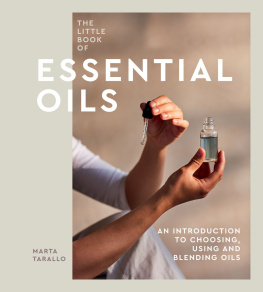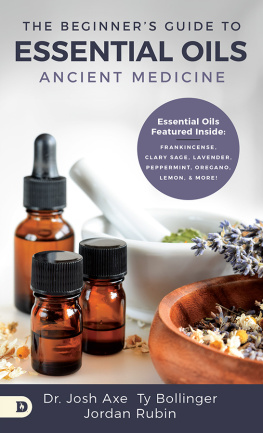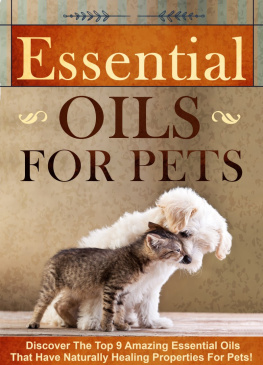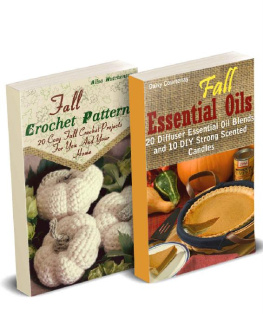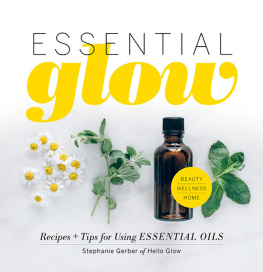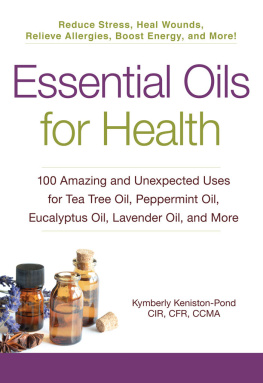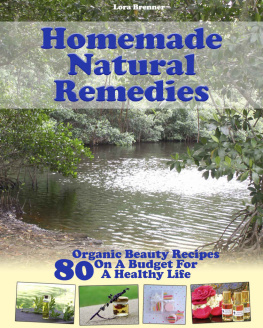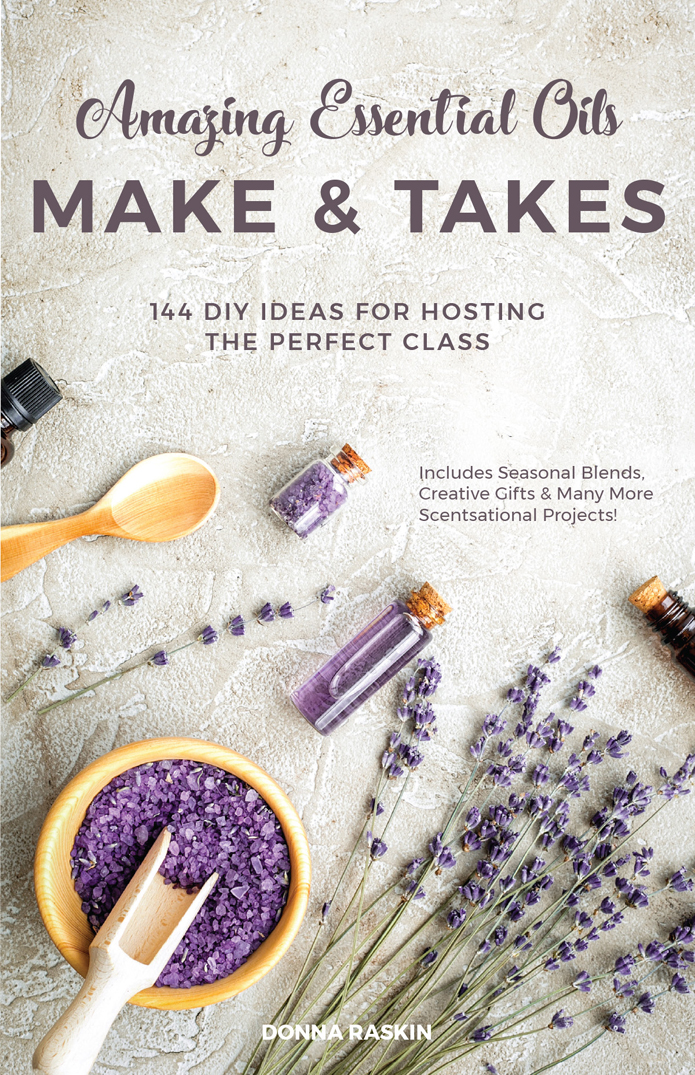Table of Contents
Guide

Text copyright 2018 Donna Raskin. Design and concept copyright 2018 Ulysses Press and its licensors. All rights reserved. Any unauthorized duplication in whole or in part or dissemination of this edition by any means (including but not limited to photocopying, electronic devices, digital versions, and the internet) will be prosecuted to the fullest extent of the law.
Published in the United States by:
Ulysses Press
P.O. Box 3440
Berkeley, CA 94703
www.ulyssespress.com
ISBN: 978-1-61243-846-7
Acquisitions editor: Casie Vogel
Managing editor: Claire Chun
Editor: Shayna Keyles
Proofreader: Barbara Schultz
Cover design: Raquel Castro
Artwork: cover 279photo Studio/shutterstock.com; season icons lettett/shutterstock.com
Production: Jake Flaherty, Claire Sielaff
Distributed by Publishers Group West
IMPORTANT NOTE TO READERS: This book has been written and published for informational and educational purposes only. It is not intended to serve as medical advice or to be any form of medical treatment. You should always consult with your physician before altering or changing any aspect of your medical treatment. Do not stop or change any prescription medications without the guidance and advice of your physician. Any use of the information in this book is made on the readers good judgment and is the readers sole responsibility. This book is not intended to diagnose or treat any medical condition and is not a substitute for a physician. This book is independently authored and published and no sponsorship or endorsement of this book by, and no affiliation with, any trademarked brands or other products mentioned within is claimed or suggested. All trademarks that appear in ingredient lists and elsewhere in this book belong to their respective owners and are used here for informational purposes only. The author and publisher encourage readers to patronize the quality brands mentioned in this book.
Contents
When people walk into my home, they often stop and say, It smells good in here. They take a deep breath and, after they exhale, they smile. Immediately, the aroma calms them, and we sit to have tea and talk.
The essential oils I have in diffusers, simple clay bowls, and candles around my home help to create a mood, just as much as my furniture, baking, and tea or coffee do when a friend visits. Like you, I want to be hospitable. I want people to come into my home and feel comfortable immediately, and one of the easiest and least expensive ways to achieve this is with essential oils.
In the case of essential oils, the word essential means essence. In other words, the oils are the very essence of rose or lavender or grapefruit. An essential oil is not an imitation or synthetic. More importantly, though, the essence of an essential oil is a key to its power. Scent is directly related to our sense of memory and mood. Although its true that the human sense of smell is not as strong as that of a dog, it is also true that we respond to scent in a more subtle, and yet still powerful, manner.
For example, our sense of smell is 10,000 times more powerful than our sense of taste. In fact, much of what we consider taste is truly our sense of smell. Think about when you have the flu and make a pot of homemade chicken soup. Most of us first inhale the scent of the soup before we eat. Both the steam and the aroma of the chicken, carrots, and onions are immediately soothing and healing.
Interestingly, scientists have long believed that much of our response to aroma is based on association rather than cause and effect. For example, that chicken soup I just describedit is not so much that the smell of onions immediately works to cure the flu, but that because we associate the scent of chicken soup with healing, our minds begin to focus on the act of healing once we have the chicken soup in front of us.
However, traditional medicine experts, and now many holistic medical specialists, understand that the essential oils themselves, and not just their scent, have curative powers. For example, tea tree oil, which comes from the Melaleuca alternifolia plant, which is native to Australia, has long been an effective antifungal and antivirus medication. In other words, while it is a fragrant essential oil, it is not just its scent that improves our health. Tea tree oil kills bacteria on human skin and kills mold in the atmosphere, among other uses, so its scent is secondary to its other healing properties.
Most people who are new to essential oils think their value comes predominantly from their scents and the way we feel when we smell the oil, but thats not entirely true. Many essential oils have other medicinal qualities and can be applied to the skin or taken internally. However, since I am not a doctor and because I cant guarantee the quality of the oils you purchase, I dont feel comfortable recommending you take any oils internally or use uncommon ones on your skin to be absorbed.
Making Essential Oils Gifts and Projects
Lets face it, in the face of the pharmaceutical and medical industries, essential oils are a small informal business. Essential oil experts dont visit dermatologists to give samples and suggest that they offer their customers tea tree oil rather than a new, expensive-to-develop, chemical acne medicine. They dont tell a child psychologist that there is scientific backing to suggest that a teenager light a homemade aromatherapy candle with orange and peppermint to help her focus while she studies.
The fact is, essential oils and aromatherapy may not be high-tech or pharmaceutical, but they work. (See for answers to frequently asked questions about essential oils.) Plus, they are inexpensive and we can learn about them through experience, both hands-on and anecdotal. For example, I had a massage therapist who used the most incredible lavender and eucalyptus oil and I still use that mixture to help me relax. I have friends who use Etsy to buy homemade candles made with ylang-ylang and bergamot to create an atmosphere of romance. More than anything, though, essential oils are easy to experiment with and learn from on your own.
All around you, people are using essential oils. Many of these people want to learn more recipes and craft ideas so they can give essential oil gifts or sell essential oils and their products. Candles, diffuser mixtures, medicine cabinet recipes, beauty products, and holiday presentsthese are just some of the fun creations you and your friends, and eventually your customers, can make with essential oils.
Essential Oil Party How-Tos
Hosting an essential oil party is a great way to introduce your friends and family to the benefits of essential oils. Like any party, your event will be more successful if you take certain steps.
First, try to focus not on selling, but on sharing information, just the way a teacher does. You have a passion for essential oils, and, just like a school teacher, you want your guests, or students, to learn more about your passion so that they will share it, as well.
Im a teacher, and the first thing I always do is ask questions. This immediately engages your guest. You might start with, Have any you ever walked into a room and immediately noticed the scent? Do you remember what it was? If one of your guests answers, try to pull out the scent that they mention. If it was flowers, take out your orange blossom oil, while if it was the smell of cookies in the kitchen, let them sniff your vanilla essential oil. Make sure it is passed around so everyone gets to smell.
Next page

